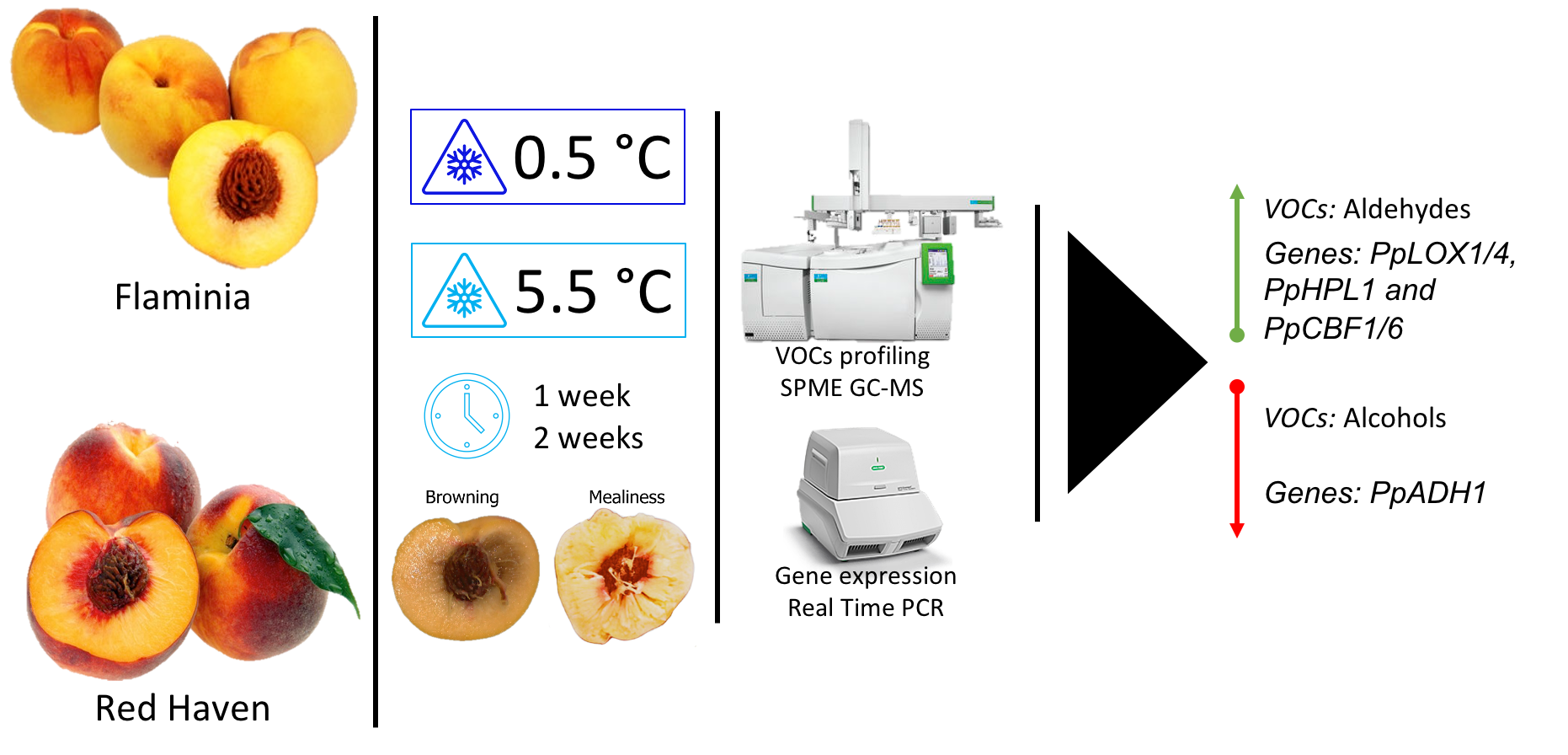Volatile compound and gene expression profiles associated with the storage of two peach fruit varieties differently sensitive to chilling injuries

Published 2020-07-13
Keywords
- cold storage,
- C-repeat-binding factors,
- lipoxygenase pathway,
- Prunus persica,
- volatile organic compounds
How to Cite
Abstract
The patterns of volatile organic compounds (VOCs) emission and the expression of genes associated with the lipoxygenase (LOX) pathway have been studied in harvested peach fruit of two cultivars ('Flaminia', FL, and 'Red Haven', RH) during and after cold storage. Two temperature storage conditions have been applied for two weeks: 0.5 and 5.5°C, the latter recognized to be an inducer factor of chilling injury (CI) of the flesh. Fruit were also monitored during 3 days of shelf-life (SL) at room temperature after removing from the cold storage. A different behaviour between cultivars has been observed in terms of internal browning (more evident in FL after 2 weeks) and extractable juice (already reduced in RH at the end of 1 week of storage at 5.5°C). Although some common responses have been observed (e.g. a general increase of 2-hexenal and 2-hexenal-E at the end of both cold storage conditions), LOX pathway-associated volatiles (aldehydes, alcohols, esters) showed different trends in relation to the genotype and the applied stress, with apparently no specific correlations with the incidence of CI. The expression level of five LOX pathway-associated genes (PpLOX1, PpLOX4, PpHPL1, PpADH1, PpAAT1) have been analysed and the results point out that a genotype-dependent behaviour is present, but specific responses (up-regulation of PpLOX1 and PpAAT1 during SL) appear to be present in both cultivars. In addition, the expression of two C-repeat-binding factors (PpCBF1 and PpCBF6), recognized to be involved in the responses of plant tissues to low temperature stress, showed marked changes in relation to the applied temperature, suggesting that these genes might play a regulatory role in the overall metabolism of cold stored peaches.





